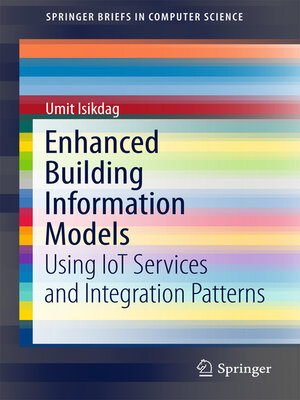Enhanced Building Information Models
ebook ∣ Using IoT Services and Integration Patterns · SpringerBriefs in Computer Science
By Umit Isikdag

Sign up to save your library
With an OverDrive account, you can save your favorite libraries for at-a-glance information about availability. Find out more about OverDrive accounts.
Find this title in Libby, the library reading app by OverDrive.



Search for a digital library with this title
Title found at these libraries:
| Library Name | Distance |
|---|---|
| Loading... |
This book explains how to combine and exploit sensor networks and internet-of-things (IoT) technologies and Web-service design patterns to enrich and integrate Building Information Models (BIMs). It provides approaches and software architectures for facilitating the interaction with (and between) BIMs through Web services, and for enabling and facilitating the fusion of the information residing in such models or of information acquired from IoT technologies. The proposed software architectures are presented in the form of design patterns. This information fusion will facilitate many novel application fields ranging from emergency response, to urban monitoring and surveillance, and to smart buildings.
The book consists of 8 chapters. The first 2 chapters focus on the basics of BIMs, while chapter 3 presents fundamental service-oriented architecture patterns for complex information models. Subsequently, chapters 4 and 5 elaborate on the hardware and software side of IoT, with aspecial focus on their use for BIMs. Chapter 6 provides advanced SOA patterns for BIMs, while chapter 7 details patterns for IoT, and for BIM and IoT information fusion. Lastly, chapter 8 summarizes the work and provides an outlook on promising future developments.
Overall, the book will be beneficial for researchers and developers in the fields of building information models, IoT applications, and systems integration.







